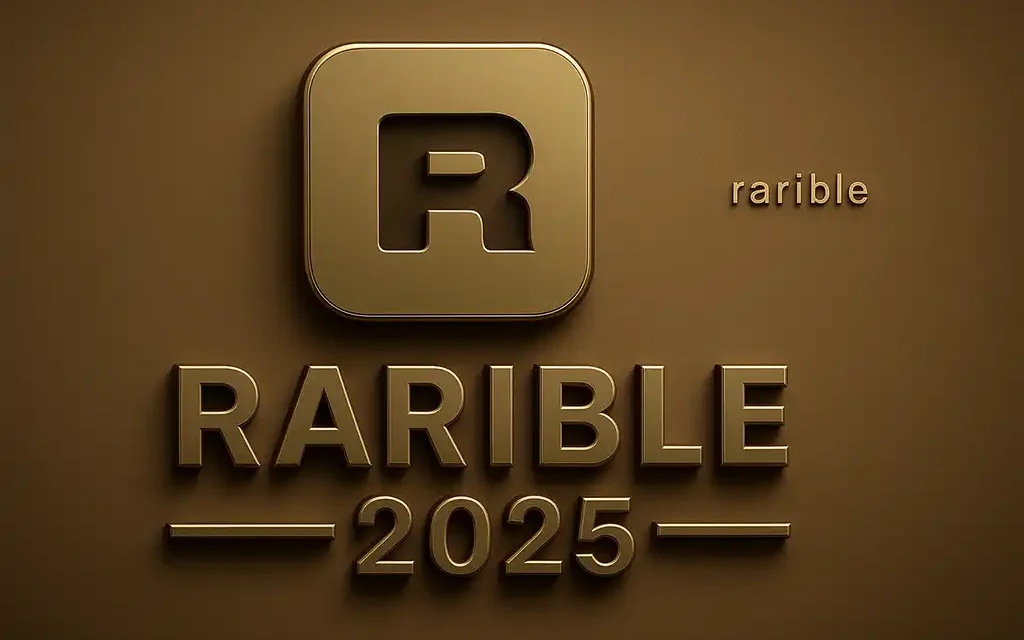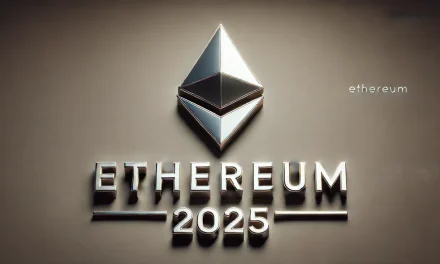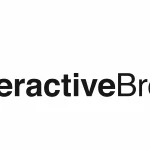In the volatile and fast-maturing world of Web3, Rarible stands out as one of the few NFT platforms that has undergone a genuine architectural evolution. Launched in early 2020, Rarible initially positioned itself as a user-friendly Ethereum-based NFT marketplace, enabling artists to mint and sell digital assets directly to collectors. At the time, this was a novel proposition: minting tools were scarce, on-chain royalties were largely unenforced, and NFT trading was concentrated among a handful of experimental projects.
Over the past five years, however, Rarible has transformed from a basic mint-and-list marketplace into a modular, multichain infrastructure protocol. As of 2025, it supports more than 30 blockchains and offers a white-label marketplace engine, APIs for NFT developers, tools for community governance, and plug-and-play storefront infrastructure for DAOs and brands. Rather than focusing solely on user volume or competing for market share against OpenSea and Blur, Rarible has pivoted toward enabling other ecosystems to build marketplaces of their own.
It’s no longer accurate to describe Rarible as a destination platform. It now operates as a protocol layer—one that empowers artists, collectors, developers, and entire communities to launch decentralized commerce networks with a focus on digital ownership and sovereign creator control.
This report outlines Rarible’s state in 2025: its evolving feature set, multichain reach, enterprise and DAO deployments, tooling for developers, and its broader role as a platform for NFT infrastructure in a post-platform Web3 economy.
1. Multichain Compatibility
As of mid-2025, Rarible supports over 30 blockchains, giving users unprecedented flexibility in NFT minting and trading. This multichain orientation enhances interoperability and significantly reduces costs for creators and collectors.
Supported Blockchains on Rarible (2025)
| Tier 1 Chains | Tier 2 / L2 Chains | Modular / Niche Chains |
|---|---|---|
| Ethereum | Arbitrum One | RARI Chain |
| Polygon | Base | Match |
| Solana | zkSync | Berachain |
| Tezos | Immutable X | GOAT Network |
| Flow | LightLink Phoenix | 5ireChain |
| Palm | MegaETH | Shape |
| Celo | — | Settlus |
| Moonbeam | — | Viction |
| Aptos | — | Xai |
| Lisk | — | ZKcandy |
| Oasys | — | Saakuru |
| Kroma | — | Mantle |
| Sei | — | Eclipse |
| Telos EVM | — | — |
These integrations reflect Rarible’s intent to serve a broader range of use cases—from high-speed gaming environments to enterprise-level NFT deployments.
RaribleX: A White-Label Framework for the NFT Economy
At the heart of Rarible’s evolution into infrastructure is RaribleX, a white-label NFT platform solution that enables third parties to build their own custom marketplaces. Rather than serving as a centralized marketplace competing for traffic, RaribleX allows DAOs, IP holders, entertainment brands, and digital artists to launch fully branded NFT storefronts—each powered by Rarible’s backend but controlled by the individual community or business deploying it.
This infrastructure includes everything needed to operate a standalone NFT marketplace: hosted front-end environments, customizable branding, support for multi-chain minting, dynamic royalty and fee structures, and integrated wallet management. Unlike traditional whitelabel tools, RaribleX maintains deep compatibility with over 30 blockchains, giving operators the ability to support users across Ethereum, Polygon, Tezos, Base, Solana, and others from a single interface.
RaribleX also provides access to a unified order book and metadata indexer that connects with the broader Rarible Protocol. This means listings on custom storefronts can be surfaced across the Rarible network and aggregated for greater visibility, while still allowing operators to set bespoke marketplace rules.
The platform has already powered several notable deployments. GOATible, developed in partnership with GOAT Network, is a multichain NFT marketplace tailored for Web3-native drops and community engagement. Krapopolis, the Fox Broadcasting Company’s animated comedy created by Dan Harmon, also used RaribleX to host its official NFT site. Beyond high-profile launches, a growing number of DAOs and creator communities have adopted RaribleX to host their own self-governed marketplaces, using the platform’s tooling to enforce royalties, curate listings, and directly monetize their cultural capital.
RaribleX exemplifies the platform’s pivot toward infrastructure. By providing modular marketplace frameworks rather than controlling a singular destination, Rarible positions itself as a foundational layer in the NFT economy—empowering others to build, brand, and govern their own decentralized commerce environments.
RaribleFUN and the MegaETH Integration
In early 2025, Rarible launched RaribleFUN, a purpose-built NFT platform designed for speed, experimentation, and accessibility. It operates on MegaETH, a next-generation Ethereum Layer 2 solution engineered for high-throughput performance. MegaETH distinguishes itself from other L2 networks by boasting the capacity to process over 100,000 transactions per second—a scale more commonly associated with centralized systems than permissionless blockchains.
RaribleFUN was developed as a proving ground for new interface models and lightweight trading experiences. Unlike the core Rarible.com platform or white-label marketplaces powered by RaribleX, this environment strips down the NFT interaction process to its essentials. The result is a user experience defined by near-instant minting, sub-second transaction finality, and extremely low fees. It is also one of the first NFT interfaces intentionally designed for mobile-first interaction, anticipating future demand for high-volume NFT activity in gaming, social media, and streaming environments.
The platform introduces experimental UI/UX paradigms that depart from traditional grid-based marketplaces. It is oriented toward early adopters, NFT-native collectors, and creators who are comfortable operating at the edge of blockchain usability. By minimizing friction and embracing rapid iteration, RaribleFUN gives the Rarible ecosystem a sandbox for testing new mechanics—ranging from dynamic pricing algorithms to responsive metadata rendering and gamified minting flows.
While it may not serve mass-market collectors directly, RaribleFUN plays a strategic role in Rarible’s broader infrastructure portfolio. It reflects the company’s willingness to explore next-generation performance layers and alternative models of NFT interaction that prioritize immediacy and scale over conventional listing experiences. In doing so, RaribleFUN helps future-proof the protocol for an evolving NFT landscape where speed, mobility, and experimentation are no longer luxuries—they’re requirements.
Developer Tools and the Rarible Protocol API
As part of its transition from a consumer-facing marketplace to a foundational NFT protocol, Rarible has prioritized open infrastructure for developers. The platform now offers a robust suite of tools designed to make NFT integration seamless across a wide range of applications—including marketplaces, wallets, games, and decentralized applications (DApps).
At the core of this offering is a multi-chain developer API that provides access to real-time data across all supported blockchains. The real-time NFT indexer enables developers to query live information on assets, metadata, collection status, and ownership, without needing to build and maintain their own chain-specific indexers. This significantly reduces the overhead for teams building on new chains or aggregating data across multiple networks.
The aggregated order book is another central feature. By unifying liquidity across marketplaces and chains, Rarible allows applications built on its protocol to access a broad range of listings—not just those originating from Rarible.com. This enables developers to build trading experiences that are both decentralized and richly liquid, without relying on siloed or centralized sources.
To further simplify integration, Rarible provides a trading SDK. This software toolkit offers prebuilt logic for listing, buying, selling, bidding, and royalty distribution. It is designed for rapid deployment and minimizes the complexity of building a compliant and user-friendly NFT platform from scratch.
Equally important is the royalties engine, which supports on-chain, programmable royalty standards across multiple chains and formats. Developers using the protocol can enforce creator-defined royalties at the protocol level—enabling persistent, chain-agnostic revenue flows for artists and content owners. This is especially relevant in an era where major marketplaces have moved to reduce or bypass royalties in favor of zero-fee trading.
By decoupling its protocol from the front-end experience, Rarible allows developers to build entirely independent products that plug into its infrastructure. In practice, this means that creators can power collections, collectors can manage portfolios, and platforms can facilitate trades—all without ever touching the Rarible.com interface. It marks a significant step toward modular, open NFT systems where the platform is the protocol, and the protocol is invisible.
Creator and User Features
Despite its growth into a protocol-layer platform, Rarible continues to prioritize accessibility for creators. Its ecosystem offers a suite of user-friendly tools designed to lower the technical and financial barriers to entry—particularly for independent artists, small DAOs, and startups entering the NFT economy for the first time.
One of the most important features is lazy minting, a mechanism that allows creators to list digital assets without immediately writing them to the blockchain. Minting only occurs at the point of purchase, which eliminates upfront gas costs and reduces financial risk for artists experimenting with new collections or limited-edition drops. This feature has been especially beneficial for creators working on chains where gas fees are volatile or unpredictable.
Rarible also offers a custom royalties engine, enabling creators to define their own royalty structures without being bound by platform-level defaults. This ensures that revenue from secondary sales can flow back to original content owners, even as assets move across different marketplaces and chains. In a landscape where some platforms have moved to reduce or remove royalty enforcement, Rarible’s commitment to creator-defined economics sets it apart.
Another notable enhancement is multi-wallet profile support. Users can link up to twenty wallets—across different blockchains—under a single Rarible account. This allows for seamless management of assets spread across Ethereum, Solana, Polygon, Tezos, and more, without needing to constantly log in and out or switch browser extensions.
Rounding out the toolset is a suite of no-code creation tools. These web-based dashboards let users launch NFT collections, define token metadata, manage drops, and configure royalty logic—all without writing a single line of smart contract code. By removing the need for developer resources, Rarible gives creators full autonomy over their projects, whether they’re deploying a generative art series or building a branded community collection.
Collectively, these features reflect Rarible’s original ethos: to democratize digital ownership and empower creators with the tools to participate directly in blockchain-based economies. Even as the protocol scales upward in complexity and capability, it continues to serve individual users at the grassroots level.
Governance and Token Economy
At the center of Rarible’s governance model is the $RARI token, which continues to serve as the native governance asset for the Rarible Protocol. Introduced in 2020 as one of the first governance tokens in the NFT space, $RARI was originally distributed to active participants in the marketplace, including buyers, sellers, and creators. Over time, however, Rarible has shifted away from incentive-driven distribution models in favor of long-term sustainability and infrastructure development.
Despite this transition, $RARI retains its role as the primary mechanism for community governance. Token holders are able to vote on a range of proposals that influence the direction of the protocol. These include decisions related to protocol upgrades, grant funding from the Rarible DAO treasury, fee and royalty policy adjustments, and strategic roadmapping. While voting power is proportional to token holdings, Rarible’s governance process remains open to all holders, regardless of size.
Participation levels, however, remain relatively modest compared to some of the more financially-driven DAOs in the DeFi space. This is partly due to the creative nature of the Rarible ecosystem, which attracts artists and builders more than professional governance participants. Even so, the Rarible team has consistently emphasized transparency and inclusiveness in its decision-making, working to balance decentralized input with responsible protocol stewardship.
As NFT infrastructure becomes increasingly multichain and protocol-oriented, governance models like Rarible’s may evolve further—especially if newer forms of quadratic voting, delegation, or role-based participation are introduced. For now, $RARI continues to provide a foundational link between users and protocol control, ensuring that decisions about fees, royalties, upgrades, and funding remain, at least in theory, community-governed.
Ecosystem Outlook and Strategic Vision
Looking ahead, Rarible is no longer defining itself by the conventional metrics of an NFT marketplace—such as trading volume, floor price trends, or leaderboard dominance. Instead, it is positioning itself as a modular NFT infrastructure provider, supplying the tools and protocol-level services that enable others to launch their own marketplaces, minting platforms, and tokenized communities.
This shift is intentional and strategic. Rarible’s long-term vision is centered around supporting a decentralized creator economy by becoming the underlying layer for NFT commerce, especially in verticals where ownership, interoperability, and royalties still matter. These include Web3-native communities, media and entertainment brands, blockchain-based gaming ecosystems, and AI-generated art platforms—sectors where NFT infrastructure is used to encode identity, reputation, access, and creative attribution.
Rather than compete head-to-head with platforms like OpenSea, Blur, or Magic Eden, Rarible has adopted a role similar to white-label SaaS providers in the Web2 world. Just as Shopify empowers merchants to create their own branded e-commerce stores, Rarible enables creators and organizations to become the marketplace—complete with their own storefronts, user interfaces, fee structures, and community governance models. These marketplaces, built using RaribleX and powered by the Rarible Protocol, often operate independently from Rarible.com and carry no overt Rarible branding, making the infrastructure largely invisible to the end user.
What makes this approach powerful is its scalability across blockchains. With continuing integrations across Layer 2s, app-specific chains, and modular execution environments, Rarible is quietly embedding itself as a backend layer for dozens of branded marketplaces. In a future where NFT activity is fragmented across chains, use cases, and creator networks, Rarible’s value may not lie in centralizing traffic—but in decentralizing tools.
If this trajectory holds, Rarible won’t just be an NFT platform. It will be a protocol standard—powering the next wave of creator-owned digital economies from behind the scenes.
Conclusion: A Platform Built for Web3 Multipolarity
By 2025, Rarible has completed a transformation that few platforms in the NFT space have managed. It is no longer tethered to a single domain name, front-end interface, or blockchain ecosystem. Instead, it exists as a distributed architecture—a set of protocols, APIs, and modular components that support NFT creation, distribution, governance, and commerce across more than thirty blockchains.
Rarible’s greatest strength lies in its multipolarity. It does not seek to centralize user activity, but to decentralize capability—offering the infrastructure that enables creators, developers, brands, and communities to build independently. Whether through white-label marketplaces, mobile-first minting environments, or invisible backend integrations, Rarible’s presence is often felt more than seen.
In an era where NFTs are no longer a novelty but a format—used for everything from gaming assets and streaming passes to AI-generated content and DAO governance—Rarible’s value proposition is clear: it is not here to dominate one marketplace. It is here to help others build many.









